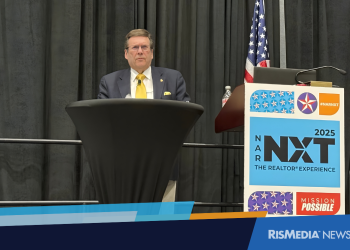By Stephanie Andre
RISMEDIA, August 15, 2008-In today’s faster, got-to-have-it society, consumers are looking for the next best thing. They want to take their home to the next level. They also want a surefire method of conducting business-especially with the high number of people working at home. And for real estate professionals, in this market, anything that can sweeten the deal is a plus.
Verizon has worked hard to answer the call with FiOS, its fiber optic service. The company recently commissioned a survey and report-Fiber-to-the-Home Advanced Broadband 2007-to convey the fact that it is seriously focused on fiber running all the way to the residence.
It should be noted that many systems designed for fiber-to-the-home also supply service to small- and medium-sized businesses, as well as government agencies. The report also addresses such activity.
Broadband Matters
According to the survey, conducted by RVA Render & Associates, there seems to be a large-and growing-desire for broadband. Agents should take note: some 61% of households have broadband-the ability to transmit large amounts of data usually for Internet, TV and phone-with coverage growing rapidly.
Interestingly enough, the appeal seems to go well beyond the more sophisticated user. In fact, 48% of those surveyed said they had dial-up or no Internet service at all prior to installing fiber to the home (FTTH).
What’s more, more than two-thirds of those surveyed (65%) said that FTTH was an important decision in buying their home.
More Value-for the Home and to the Consumer
For those interested in a home with FTTH installed, buyers would spend an average of 0.8% more to buy a home if the choice came down to two similar homes.
According to the U.S. Census Bureau, the national average for a home is $293,100. With a 0.8% increase, it would be an additional $2,344 to purchase a home with FTTH. For more information, here’s a regional breakdown:
– Northeast average: $505,700 at 0.8% = $4,045 higher dollar value
– Midwest average: $239,900 at 0.8% = $1,919 higher dollar value
– South average: $252,700 at 0.8% = $2,021 higher dollar value
– West average: $360,700 at 0.8% = $2,885 higher dollar value
As buyers and sellers learn more, some say, they are realizing that there’s a huge benefit to purchasing a home with FTTH already installed-or adding it themselves.
What’s more, in today’s real estate environment, having something that differentiates the home is a huge boost. With some real estate professionals offering cars, boats and vacations, FTTH seems like a perfect solution to sweetening a potential deal.
Besides the pure dollar value of the home, there’s also performance and consumer satisfaction to consider. According to the FTTH Council, only FTTH delivers the full benefit of fiber-the great home entertainment experiences that happen when the barriers are broken and there are no limits to speed and capacity.
However, according to the study, the benefits of fiber stop…well, where the fiber literally stops. Just because there’s fiber somewhere in a network, doesn’t mean that the network delivers the benefits of FTTH. Fiber delivers unlimited speed and capacity. However, once the fiber hits copper, its speed, capacity and benefits hit limits.
But fiber’s benefits are not just about speed; it’s about the unlimited capacity to carry large files, such as leading-edge games, movies, music and photographs-as well as medical images and multimedia programming for distance learning.
Fiber shatters the limitations we’ve come to expect from older technologies, concludes the study. Consumers are more satisfied, reporting an 86% satisfaction rate with FTTH, compared to 66% with cable, 60% with DSL and 30% with dial-up.
According to the study, satisfaction was measured by reliability of service, speed, customer service and price. To that end, FiOS was the only provider that had superior scores across the board for reliability and service in a Consumer Reports February 2008 study.
In line with the satisfaction results, research continues to show that FTTH users work about one additional day per month at home because of FTTH. In fact, 9% work more from home directly because of FTTH. That’s an average of 11 more days per year.
What Is Fiber, Really?
Indeed, there is much that the public is only now starting to learn about fiber and its place in the home.
Part of that confusion comes from what service providers deem “fiber networks,” according to the study. However, oftentimes, these networks provide fiber to within 3,000 feet of a home, but the rest of the installation is the old cable/phone line. Simply put: all the benefits of fiber stop when the fiber line stops.
What’s more, currently, no major cable operator can provide fiber-optic service all the way to the home. Consumers can only get the benefits of fiber optics with an FTTH provider, the study states.
For Verizon’s part, the company’s FiOS platform is certified by the FTTH Council, a nonprofit organization with a mission to educate, promote and accelerate fiber-to-the-home and the resulting quality-of-life enhancements. Its objectives are to supply a consistent and accurate view of FTTH, promote FTTH market development, and to be recognized by the industry as the fiber-to-the-home resource.
For more information, visit www.ftthcouncil.org.










